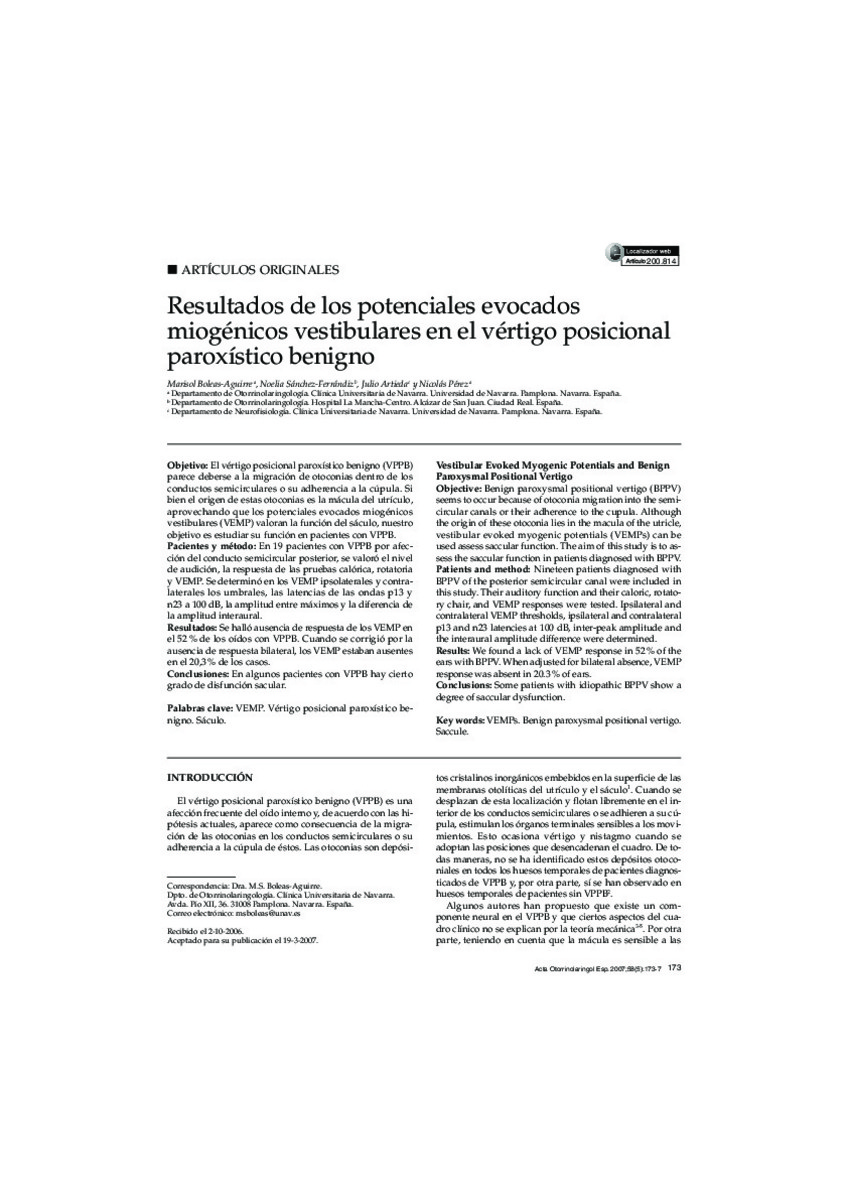Resultados de los potenciales evocados miogénicos vestibulares en el vértigo posicional paroxístico benigno
Other Titles:
Vestibular Evoked Myogenic Potentials and Benign Paroxysmal Positional Vertigo
Keywords:
VEMPs.
Benign paroxysmal positional vertigo.
Saccule.
Citation:
Boleas-Aguirre M, Sanchez-Ferrandiz N, Artieda J, Perez N. Vestibular evoked myogenic potentials and benign paroxysmal positional vertigo. Acta Otorrinolaringol Esp 2007 May;58(5):173-177.
Statistics and impact
0 citas en

0 citas en

Items in Dadun are protected by copyright, with all rights reserved, unless otherwise indicated.









